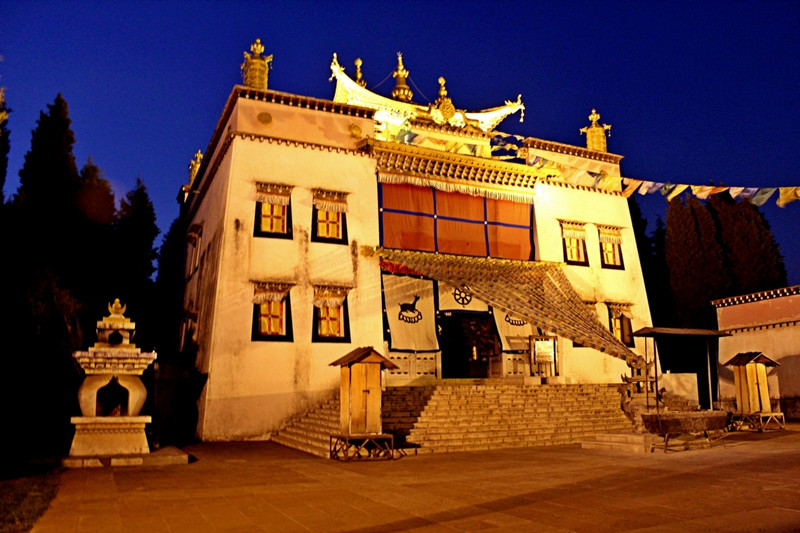
Village of Tibetan Ethnic Minority in Yunnan Ethnic Villages, Kunming
Tibetan ethnic group in Yunnan has a population of 140,000, primarily residing in Diqing Tibetan Autonomous Prefecture (迪庆藏族自治州), with smaller communities scattered in Yulong (玉龙), Gongshan (贡山), Yongsheng (永胜), Ninglang (宁蒗), and other counties. Tibetan culture is rich and diverse, featuring its own language and writing system. The Tibetan people mainly practice Tibetan Buddhism, and the color white is considered a symbol of purity. A signature Tibetan gesture of respect is offering a “Hada” (哈达), a white ceremonial scarf. Major Tibetan festivals include the Tibetan New Year (藏历年), Danba Rigu (丹巴日古), Ongqu Festival (昂曲节), and Gendong Festival (格冬节). Tibetans are known for their distinct butter tea, a staple of their unique tea culture. Tibetan folk songs and dances like “Reba” (热巴), “Guozhuang” (锅庄), and “Xianzi” (弦子) are full of life, energy, and the vitality of the highland region.
Tibetan Architecture in Yunnan
Tibetan architecture is a shining jewel in the treasure trove of Tibetan culture, a reflection of the harmony between human habitation and the natural environment. It carries both ecological and aesthetic value. In Yunnan, Tibetan homes can be divided into two main types due to the different geographical landscapes: high mountain and river valley dwellings.
The high mountain dwellings, typically found in the grassland areas, feature wooden structures with three walls made of earth, creating warm, stable two-story houses that remain cool in the summer and warm in the winter. The river valley dwellings, found along riverbanks, are often built with stone or earth, and are typically three stories high. The first floor is used as a stable or storage space, the second floor for living, and the third as a drying area. The design is sturdy and simple, showcasing a rustic beauty. These buildings are a perfect reflection of the Tibetan way of life, shaped by the environment they inhabit.
Tibetan Clothing and Culture
Tibetan clothing, a vital part of their cultural heritage, is vibrant and diverse, with different regions displaying distinct styles. Traditional Tibetan attire features long sleeves, wide belts, and tall boots. The long-sleeved, wide-waisted robes are a common feature, but the specific designs vary by region. Men typically wear long robes with a right-sided opening, secured with a wide leather belt. They often carry amulets, beautifully crafted silver-sheathed knives, and other accessories. Women’s clothing varies by season—long-sleeved robes in winter and sleeveless robes in summer, with brightly colored shirts underneath. Tibetan women also wear beautifully patterned aprons, which are tied at the waist.
The Significance of the Hada
Tibetans hold the “Hada” (哈达) in high regard, considering it a precious gift. The Hada is a white woven scarf, usually about 20–30 centimeters wide and one to two meters long, made of silk or gauze. It is a symbol of respect and goodwill, offered during important ceremonies, when visiting elders, or when receiving guests.
Butter Tea: A Cultural Staple
When people think of the Tibetan ethnic group, one of the first things that comes to mind is butter tea! In the cold Tibetan region, butter helps people stay warm, while tea aids in digestion. The combination of these two essential elements over time gave rise to the unique “butter tea culture” that is now ingrained in Tibetan social and ceremonial life. Butter tea is served during tea gatherings, weddings, and festivals, and it holds a special place in Tibetan hearts.
Every morning, the sound of butter tea being churned fills Tibetan villages, signaling the start of a new day. After finishing their prayers, Tibetans often sit down to a hot bowl of butter tea paired with “tsampa” (糌粑), a simple and delicious breakfast. The Zhongdian County Chronicle notes, “Upon seeing butter tea, Tibetans feel joy in their hearts; once they taste it, all their worries, fatigue, and fears melt away as if they had sipped the nectar of Buddha.” This quote illustrates the deep affection Tibetans have for butter tea. Would you like to try some?
Quote from Zhongdian County Chronicle: “藏胞看到酥油茶,其胸中已有悦乐,若一入口,则其辛苦忧郁恐惧疑惑完全冰解,如饮我佛甘露焉。”
Tibetan Song and Dance
Tibetan dance forms in Yunnan are represented by three major systems: Guozhuang (锅庄), Xianzi (弦子), and Tap Dance (踢踏). Their unique bell and drum dances are also famous. Tibetan folk dances involve rhythmic, coordinated movements that bring out the energy and beauty of the highland life. Traditional Tibetan songs are bold, bright, and melodious, and they frequently echo the themes of nature and daily life. When combined with dance, these performances are uplifting, fast-paced, and brimming with vitality. Tibetan song and dance is a dynamic and representative form of expression, filled with joy and warmth.
Tibetan Village in Yunnan Ethnic Villages
The Tibetan Village in Yunnan Ethnic Villages, located in Kunming’s Xishan District on Dianchi Road, spans 21 acres. The village showcases traditional Tibetan architecture, with sloped-roof houses from the Zhongdian area and flat-roofed tower houses from Deqin (德钦). The architecture beautifully demonstrates the distinct styles of Tibetan buildings, including the sacred Tibetan Buddhist temple and a grand welcoming white tower, which symbolizes harmony and peace. There is also a striking sculpture of a “White Yak” (白牦牛), a symbol of auspiciousness.
At this Tibetan village, visitors can immerse themselves in Tibetan culture and lifestyle. They will learn about the Tibetan language and script, the strong influence of Tibetan Buddhism, and how the color white symbolizes purity. Visitors can also experience the traditional Tibetan custom of offering Hada, and witness various festivals like the Tibetan New Year, Danba Rigu, and Ongqu Festival. Guests can also enjoy a taste of traditional butter tea and experience the lively and powerful Tibetan dances such as Reba, Guozhuang, and Xianzi, which vividly capture the vitality of Tibetan life.
Overall, the Tibetan Village in Yunnan Ethnic Villages is a culturally rich destination that allows visitors to appreciate not only the stunning landscapes but also the depth of Tibetan history and traditions. For those interested in cultural exploration or a deeper understanding of different ethnic groups, this is a must-visit location.
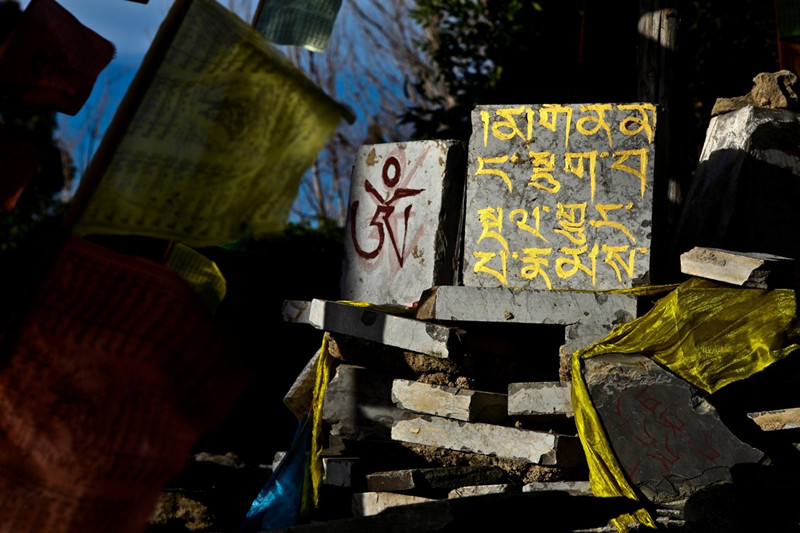

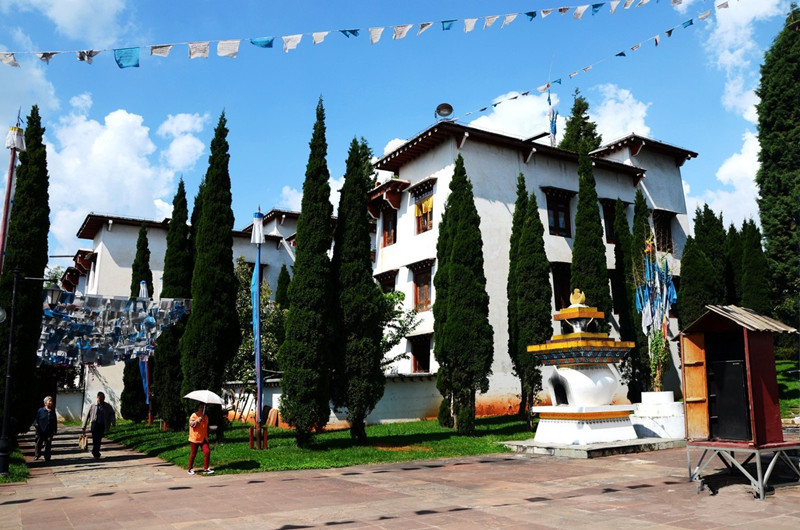
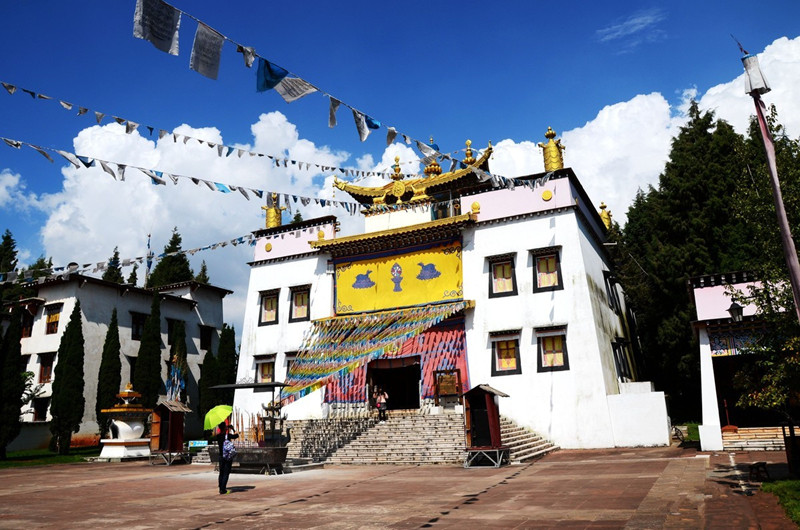
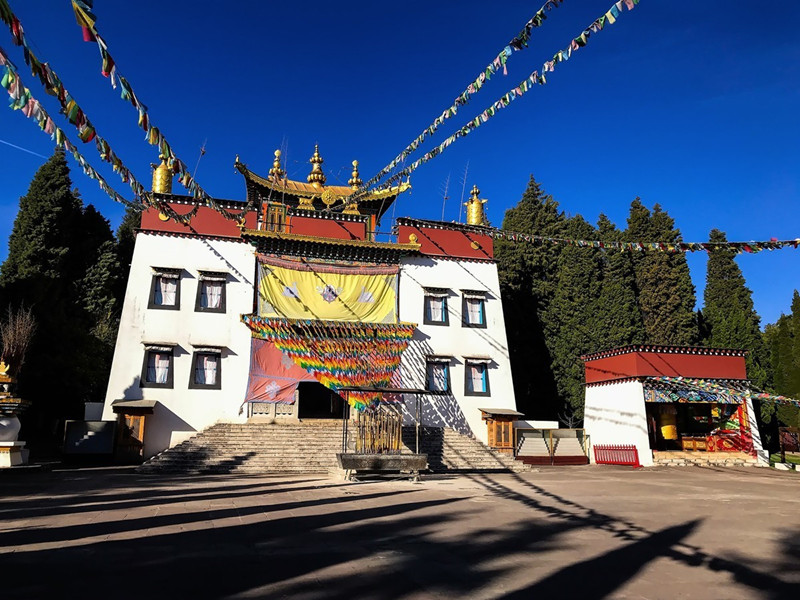
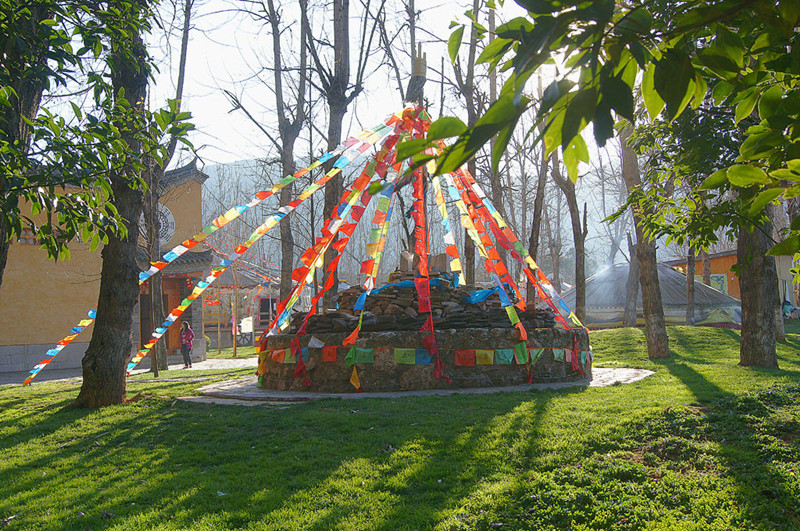
Location:

 7 Days GolfingTour
7 Days GolfingTour
 8 Days Group Tour
8 Days Group Tour
 8 Days Yunnan Tour
8 Days Yunnan Tour
 7 Days Shangri La Hiking
7 Days Shangri La Hiking
 11 Days Yunnan Tour
11 Days Yunnan Tour
 6 Days Yuanyang Terraces
6 Days Yuanyang Terraces
 11 Days Yunnan Tour
11 Days Yunnan Tour
 8 Days South Yunnan
8 Days South Yunnan
 7 Days Tea Tour
7 Days Tea Tour
 8 Days Muslim Tour
8 Days Muslim Tour
 12 Days Self-Driving
12 Days Self-Driving
 4 Days Haba Climbing
4 Days Haba Climbing
 Tiger Leaping Gorge
Tiger Leaping Gorge
 Stone Forest
Stone Forest
 Yunnan-Tibet
Yunnan-Tibet
 Hani Rice Terraces
Hani Rice Terraces
 Kunming
Kunming
 Lijiang
Lijiang
 Shangri-la
Shangri-la
 Dali
Dali
 XishuangBanna
XishuangBanna
 Honghe
Honghe
 Kunming
Kunming
 Lijiang
Lijiang
 Shangri-la
Shangri-la
 Yuanyang Rice Terraces
Yuanyang Rice Terraces
 Nujiang
Nujiang
 XishuangBanna
XishuangBanna
 Spring City Golf
Spring City Golf
 Snow Mountain Golf
Snow Mountain Golf
 Stone Mountain Golf
Stone Mountain Golf

